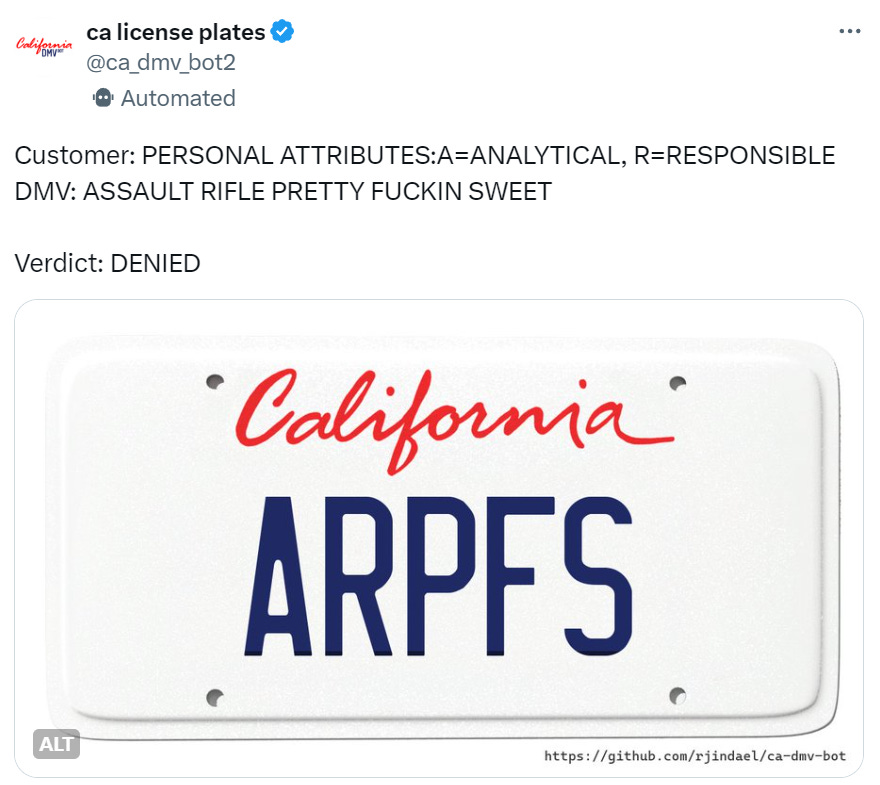Patch Notes #10
California, bugfixes and performance improvements
I was in San Francisco a couple weeks ago, and just happened to be there for the beginning of GDC, the annual game developers conference. I used to attend every year when working at Pocket Gems, but this was the first year I missed most of it. It seems like a good year to have missed out because the game industry has been suffering lately (which I’ve written about before), which was perfectly encapsulated in the GDScream event where developers gathered in nearby Yerba Buena park to scream for a minute:
"So all I really wanted to do ... Can we just get people together for just a moment of catharsis—a single minute, smack in the middle of this entire GDC, can we just have some cathartic caterwauling together, even if we can say nothing else, even if there's nothing else we feel like there's nothing else we can say at this moment, don't let GDC go by without acknowledging that collectively, we feel like things are not okay and we want things to be different."
Years ago, one of my friends applied for a vanity license plate MUNCHES in California and was summarily rejected by the DMV, I guess on the grounds that it could be some sexual innuendo? So I was amused to find that there is a Twitter bot that posts actual CA DMV vanity plate applications with comments from the DMV, I guess because it is all public record. The DMV rejects a lot of stuff you would expect like anything related to guns or gangs. Customers can add commentary explaining why their plate is legitimate (like claiming your last name is KOLT), but the DMV is pretty savvy and will use urban dictionary(!) to check things out.
Scrolling through the feed is a weird microcosm of seemingly arbitrary government bureaucratic decision-making: The DMV usually denies drug references, but BLAAZZN is ok. COOKIES are not. Innocuous standalone ‘B’s (which might mean “bitch”) like MANDY B are sometimes denied, sometimes approved. Fart references (GASPASR) are not okay. It is all delightfully Kafka-esque.We celebrated my friend Sebastian’s bachelor party here in Vegas this past weekend, which of course inevitably involved a craps table, and so I learned that in California craps is technically illegal as the law explicitly prohibits “any banking or percentage game played with cards, dice or any device.” You might reasonably think that this means strictly no craps in California, but no: you are allowed to use dice in a game, but the dice can not solely determine the outcome of the game.
So casinos shuffle a set of cards numbered one to six and lay them out on the table, players roll two dice (as in normal craps), and the result of the die rolls determine which cards from the table are used (e.g., rolling a one and six means you use the first and last card that were randomly laid out). The numbers on the cards are then used to determine the outcome. We really can solve any problem by introducing an extra level of indirection!
Longer reads
Ted Gioia on the TikTok-ification of everything:
I got into a discussion with a friend about whether AI was going to be net good or bad after last week’s bit on the enshittification of the internet. Ted’s critique of the current state of tech / content platforms is why I think it’s unfair to lay the blame on AI (yet): the cause of the rise of dopamine culture is the same as the one driving enshittification. Platforms profit from engagement, which rewards clickbait-y, dopamine-fueled content. We have been heading down this road for a long time now.
What I’m not sure of is what Ted (or anyone) thinks we should do. Top-down CCP-style control is probably not what he wants. The EU famously deploys regulation with not much innovation to show for it. The US government looks dysfunctional. Maybe California will try something, but (per the DMV and craps rulings above) I’m not sure anyone will be happy about it. It’s not that I disagree with his concerns—half of what I write about is a vague sense of foreboding given the current intersection of tech, culture, and geopolitics—but I have no idea what I’d propose as an alternative. I suppose we will all find out together.Pankaj Mishra on the Shoah after Gaza (LRB): A long piece that follows in the wake of Masha Gessen’s In The Shadow of the Holocaust (New Yorker) on the use of the Holocaust in political discourse:1
But it was only after the Six-Day War in 1967 and the Yom Kippur War in 1973, when Israel seemed existentially threatened by its Arab enemies, that the Shoah came to be broadly conceived, in both Israel and the United States, as the emblem of Jewish vulnerability in an eternally hostile world. Jewish organisations started to deploy the motto ‘Never Again’ to lobby for American policies favourable to Israel. The US, facing humiliating defeat in East Asia, began to see an apparently invincible Israel as a valuable proxy in the Middle East, and began its lavish subvention of the Jewish state. In turn, the narrative, promoted by Israeli leaders and American Zionist groups, that the Shoah was a present and imminent danger to Jews began to serve as a basis for collective self-definition for many Jewish Americans in the 1970s.
I grew up reading (and still read) a lot of WW2 history, but only more recently have read more history of the post-war era (in the Middle East and elsewhere). There is a lot here, and it goes beyond just recounting the post-war history of the Shoah, and is well worth reading.



